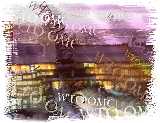
Seattle: what’s at stake?
What’s at stake?
On the eve of the 21st century, representatives of most of the world’s governments are meeting in Seattle from 30 November to 3 December 1999, to review the global trading system and ensure its dynamism and responsiveness in the years ahead.
| ON THIS PAGE > In Seattle, fresh decisions needed |
| > Back to main contents page |
| Other pages in this
series > What’s at stake? > Growth, jobs, development and better international relations: how trade and the multilateral trading system help > From Marrakesh to Seattle … and what’s ahead (1) > From Marrakesh to Seattle … and what’s ahead (2) > Concerns … and responses (1) > Concerns … and responses (2) |
| Related material > Briefing notes on ministerial issues > About the WTO |
SEE ALSO:
> Other ministerial meetings
For 50 years, the multilateral trading system, a cooperative effort among a growing number of countries, has helped deliver better jobs, growth, and development worldwide.
By opening world markets and setting predictable and stable rules for trade, it has sparked an 18-fold growth in international trade. This was a reversal of disastrous policies in the 1930s, when increased trade barriers, discrimination among trading partners and an absence of agreed rules helped fuel the Great Depression.
The World Trade Organization (WTO) was established five years ago, replacing the General Agreement on Tariffs and Trade (GATT). The WTO is an agreement among 135 member governments. The members decide on the rules governing their trade relations, and periodically enter into rounds of negotiations aimed at further opening up markets and reforming the agreements.
The WTO is a rules-based organization that seeks to foster a world where persuasion supersedes coercion, where the principle of non-discrimination among members imparts fairness, giving small countries as well as big ones a voice, and where decisions are taken by consensus. The organization is served by a Secretariat answerable to the members.
The members, the vast majority of whom are democratically elected governments, decide what happens in the WTO and in turn are answerable to the people they represent. When governments agree to something at the WTO, they must take it to their elected parliaments for ratification. What could be more democratic than that?
Like any institution that affects societies and the lives of individuals, the WTO must evolve as the world changes. And like any institution crafted by people, it can be improved. Governments and their constituents are continually searching for ways of adapting and improving the WTO. The challenge is to make it as representative and responsive as possible to all interests, whether espoused by those with power and influence or those without such advantages.
Five years ago, when the WTO was established, the member governments agreed in Marrakesh, Morocco, to broaden the scope of the system into new areas of their trade relations, to further expand trade opportunities, and to carry forward their cooperation. Since then they have been putting these agreements into effect.
Now, in Seattle, fresh decisions are needed
- Should a new round of trade negotiations be launched?
- What goals should be set for scheduled negotiations on agriculture and services?
- What concrete steps can be taken to help the poorest countries?
- How can we speed the entry into the WTO of some 30 countries eager to join?
- Can some existing agreements be better applied?
- How should present work on trade aspects of environmental protection, investment and competition be pursued?
- How should the WTO respond to concerns voiced by civil society, including the non-governmental organizations present at the Seattle meeting?
The following pages discuss briefly how trade and the multilateral trading system contribute to a better future, what the WTO has been doing, and the issues to be decided at Seattle. We then look at some questions and misunderstandings about the WTO.